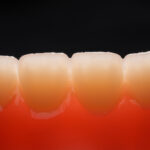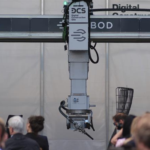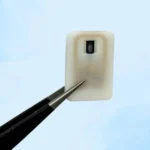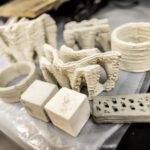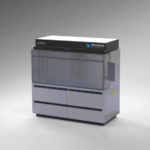With your particular slicing software I’m sure you have seen several options within the software itself relating to the infill. Furthermore I’m sure you have noticed how your printer prints the interior of an object and may have thought or wondered about that internal structure or “infill”. So in this article we are going to explore into that a bit. There is a variety of different infills you’ll see out there but I’m only going to go over 4 types; rectangular, triangular, wiggle and hexagonal or the honey comb.
Rectangular:
Rectangular being the most common and general purpose infill but really offers no real benefit over some of the others. Its simple and often a default in printing software. Most people are using this still and haven’t given much thought into anything else it seems.
Wiggle:
Almost useless unless you want a part that can twist and have a little bit flexibility to it. offers the least amount of rigidity.
Triangular:
Very useful shape, offers great strength and high lateral loads. I like this infill when I need good wall strength or longer slender structures. Think of bridges and roof trusses.
Hexagon aka the honey comb
Best infill for strength vs material used. This shape is the most efficient infill and fastest to print, the goto infill for most things. It will save you material, time, energy and also offer high strength. This is why the honey bees home is formed of hexagons. Wax is very costly to make and economically bee’s just want to make tubes with as little wax as possible to house larva, honey and what-not. Nature takes advantage of this all over the place, it’s both efficient, elegant and mathematically beautiful. This naturally occurring phenomenon is really just circles pressed together to form a tessellation. Honey bee’s are not aware of what they are building and are really only trying to form tubes that their bodies can fit into. As they build more and more of these tubes in a closed space they press together and form hexagons. Its the only outcome or shape that could occur from this which is why it is all over the place in nature. Try it out, get some soapy water and a straw, blow some bubbles. Bubbles are obviously spheres but try and make a good sized bubble then try to encircle that bubble with 6 equal sized bubbles, watch what happens as you do this.
Now why am I telling you all this and what do bees have to do with 3D Printing anyway? Much of 3D printing is really structure and design and I feel that having some knowledge in why nature does what it does will add some forethought to your creations. Doesn’t matter if your an artist an engineer or both, nature will always have more to teach us and we should pay attention to its lessons. The Hexagon infill will likely suit the majority of your needs being strong and the least material used saving you time and money. It really should be the new default and standard.




